

Mallard
AGE – BEST CRITERIA:
Most 1cy are recognized by the presence of juvenile RR and/or TT. Beware of late broods that may stay unusually fresh into mid-autumn. Juveniles start to moult TT and RR from October onwards, after which ageing gets more complicated and other characters need to be examined more closely. All features are subject to individual variation, so ageing should always be based on a summary of characters.
1cy:
2cy+:
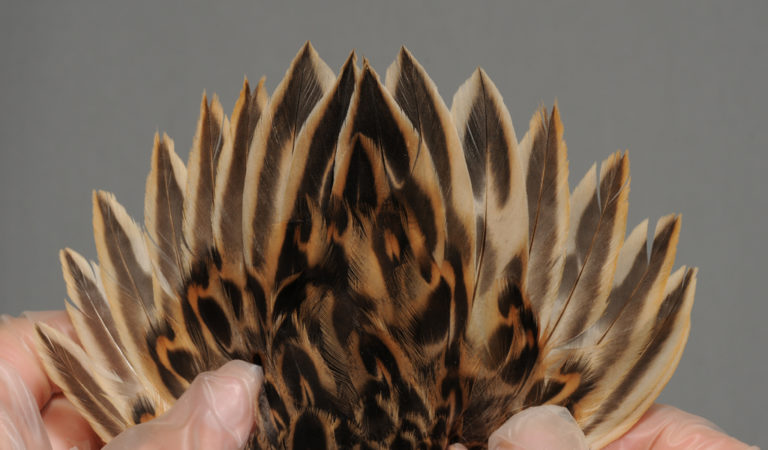
1cy, female October. This tail looks fairly fresh, but retained juvenile feathers are narrow and distinctly notched. The dark internal patterns are distinctly set off, cover most of each feather centre, and run along the shaft all the way to the tip/notch. The post-juvenile moult has started from the central pair, moulted feathers being broader, fresher, and lack notching. This is most easily seen in the third fully grown post-juvenile RR on the right-hand side, also showing a fairly horizontal pale area across the entire feather. The dark colour is obviously blacker compared to brownish in the retained RR. Usually, fresh adult feathers show warmer buff colouration as well. [90A88487]
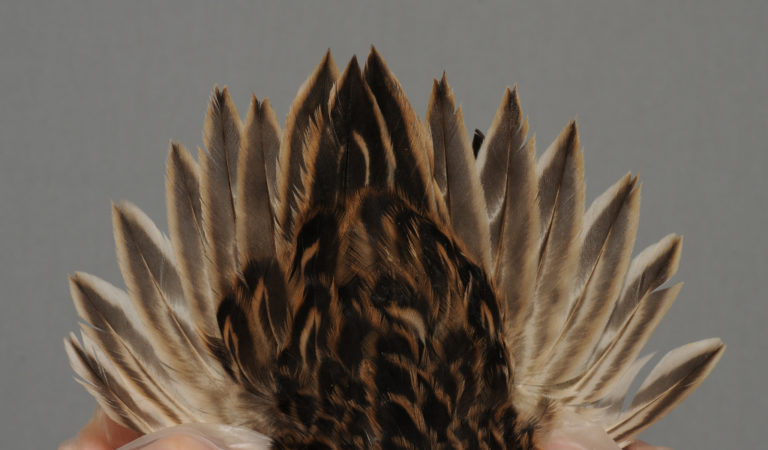
1cy female, October. A mainly juvenile tail showing narrow and notched rectrices with dark centra reaching the feather tips. Note the double internal pattern on the outer RR. Moulted central RR are blacker with warmer buff fringes. The middle, fully exposed rectrix shows internal pattern usually lacking in juveniles. [90A88642]
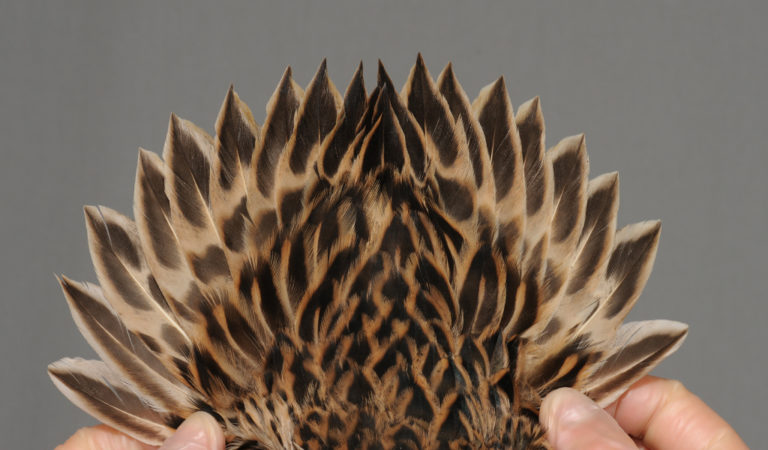
1cy female, October. A nice tail with all ten pairs of rectrices present. Most are post-juvenile, but two and one juvenile RR remain on the left- and right-hand side, respectively. On those, note different internal pattern compared to the rest, dark colour also being browner and pale edges less tawny. Juvenile R9 (to the left) is clearly narrower and more pointed compared to the post-juvenile R8, and shows typical notch at the tip. [90A88511]
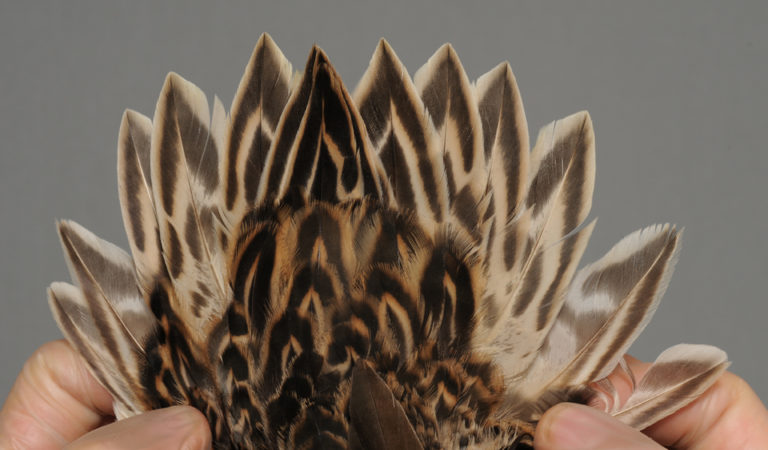
1cy female, November. Another fresh tail in a young female, which could pass as an adult if not closely examined. The two outermost RR (both sides) are retained juvenile feathers, being slightly more bleached and worn compared to the rest. The second outermost RR on the right-hand side has an unusually irregular internal pattern for a juvenile. [90A88703]
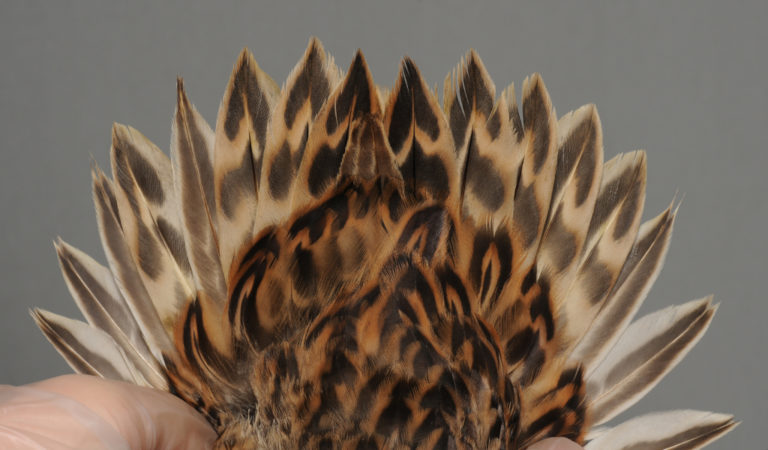
1cy female, November. A partially moulted tail with some easily recognizable juvenile feathers retained. The three outermost RR on both sides are typically narrow, pointed, deeply notched, and bleached. Their dark internal patterns are continuous and reach the notch (compare adjacent post-juvenile RR). Note also the very short, brownish and heavily worn retained juvenile central pair of RR. [90A88712]
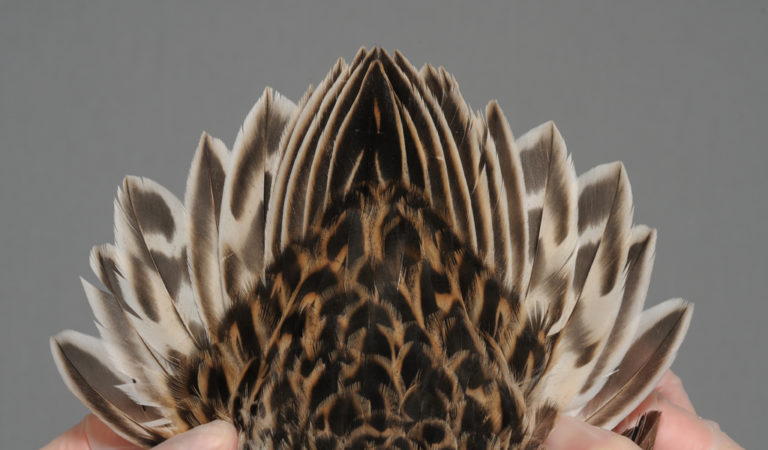
1cy female, November. A tricky bird, at first glance looking to have a quite homogeneous tail. At close examination, however, R7 on the left-hand side and R6 on the right-hand side are discernibly narrower, and the internal pattern is typical for juvenile RR and slightly browner. The two outermost RR (both sides) are also retained juvenile feathers (compare adjacent post-juvenile RR) as they follow the same pattern, although unusually broadly pale-tipped. [90A88773]

2cy+ female, October. Adult rectrices may be slightly worn, but are broad and lack obvious fraying and notching. Double internal patterns on this individual recall what is described for juveniles, but note rather extensive pale areas and indistinct dark borders. Internal pattern on central RR is typical for adult females. [90A87739]
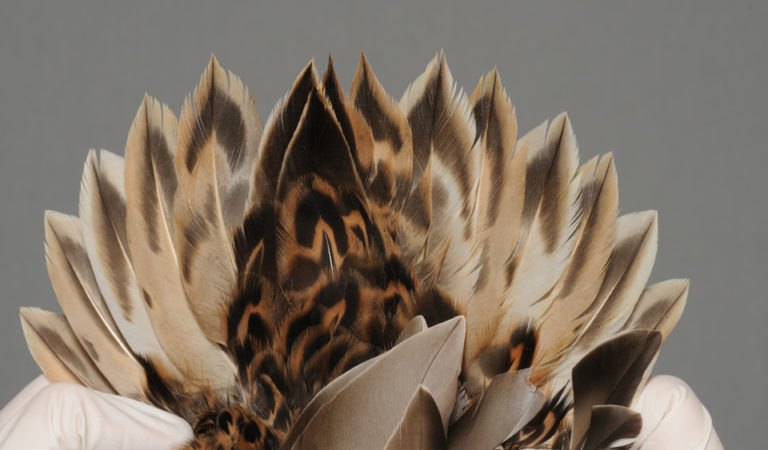
2cy+ female, September. Sometimes two generations of feathers are present. Feathers from the older generation (R5, R7, R9-10 on the right-hand side) are bleached but still have typical adult shape and patterns, and they are not heavily worn. Note the extensive pale areas, some cutting through the feather almost horizontally, a pattern never observed in juveniles. Except for the dark end of the shaft, most rectrices are broadly tipped buff or buffish-white. Central RR are almost entirely blackish with only a narrow pale edge, a pattern more often present in juveniles, but seen in some adults too. [90A87350]
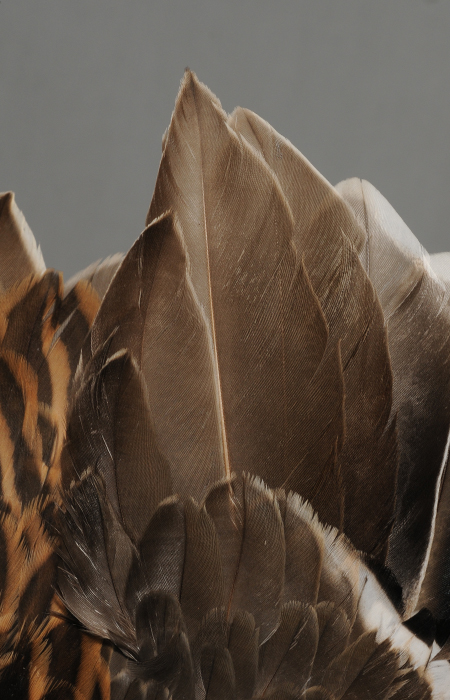
1cy female, October. The juvenile TT are quite narrow and show obvious signs of wear. The colour is mainly dark brown, often with distinct pale edges or tips (most obvious on the inner TT). The tertial-c are also slightly narrower and more worn than those of adults. In this female, buffish-white fringes are present on all large tertial-c, broadest on outer tertial-c, producing continuum with the GC wingbar, although less conspicuous than in adult females. [90A88437]
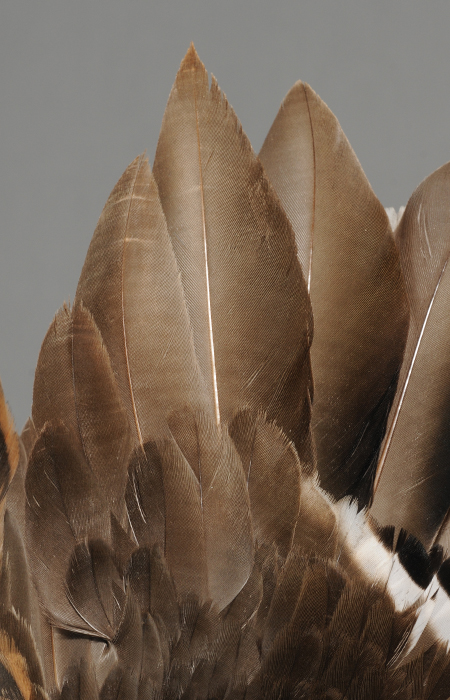
1cy female, October. Note typically narrow shape of juvenile TC and TT. This individual also has very worn TC and TT, being almost uniformly brown altogether (note strong contrast against freshly moulted scapulars). Outermost TC is the only one with a fair amount of buffish-white, most of which is worn off the second outermost TC. [90A88533]
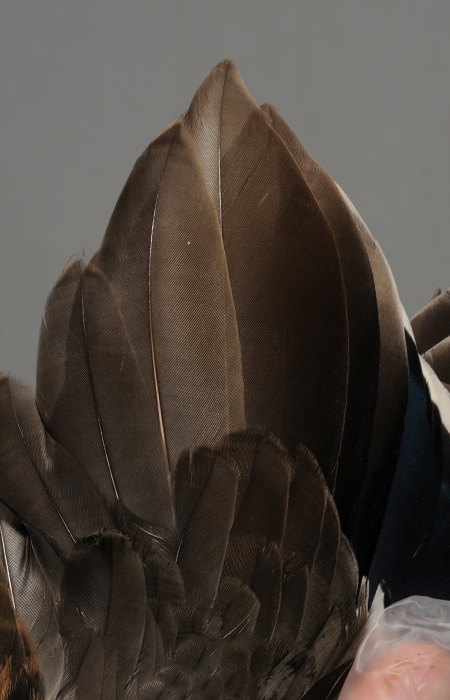
1cy female, November. An unusually dark individual. The white GC band does not continue onto TC, which is very rare (in females), but TC tips still have some buffish fringing. [90A88726]
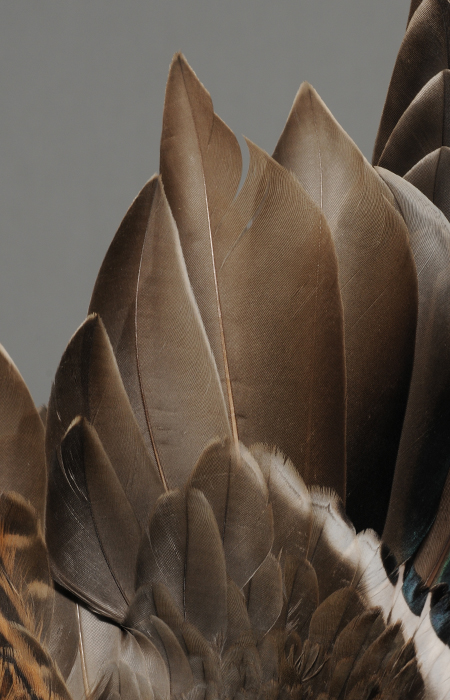
1cy female, November. This female has extremely fresh juvenile TC and TT (especially T3, which almost looks to be new, as there is a slight colour difference compared to T2) for the season (compare similar adult 90A81780 right below). T1 even shows some grey, like in adults. The age is revealed by the juvenile TC, being quite narrow and with buffish-fringed tips. [90A88704]

2cy+ female, October. This adult female has not started its moult in the tertial area and thus have worn and brownish TT and tertial-c. However, TT are still broad and greyish compared to juveniles. T1 and T2 often have discretely silvery-grey centres with warmer brown outer webs. The tips of the outer tertial-c are broadly tipped pure white. [90A86379]

2cy+ female, October. Some females have slightly darker and more uniform TT, which make them similar to fresh juveniles (compare 1cy 90A88704 right above). Grey is only visible along the shaft on the inner web of T2. The TC, however, are broad and fresh and warmer brown compared to 1cy. The outer TC have a pure white tip (note that the outermost one in this individual has an obvious black terminal band). [90A81780]
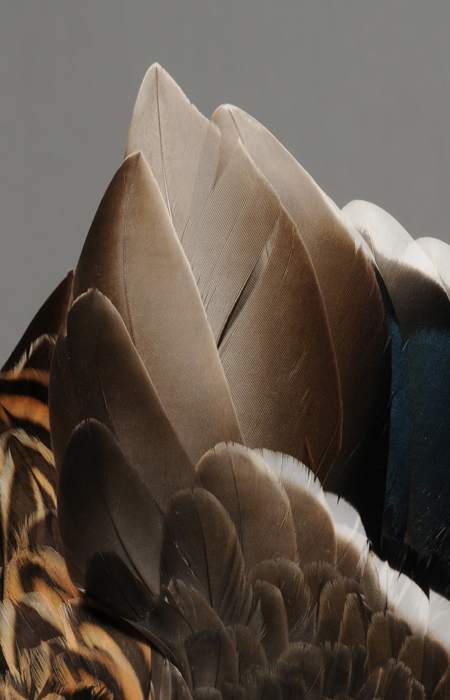
2cy+ female, October. Some adult females develop silvery-grey, male-like, TT, even with a tinge of chestnut on the outer web of T1 and T2. Note distinctly dark inner web of T3 and quite uniformly dark brownish-grey T4. The tips of the outer tertial-c are distinctly and broadly tipped pure white. Also note two generations of adult feathers in the scapular area, older ones being bleached and thus paler. [90A87350]
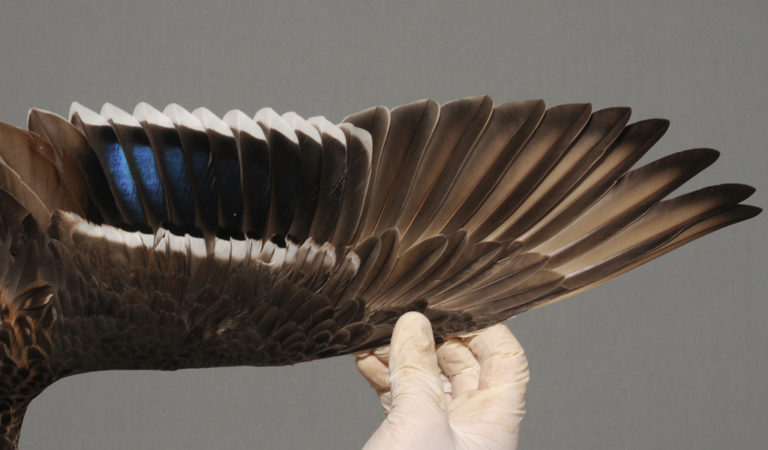
1cy female, September. LC, MC, PC and PP are generally dull brownish. The GC are rather narrow with a pattern that appears rather untidy and there is very little black in GC3. The white GC band continues onto TC, but outer TC have buffish tips. TT are narrow and brown. [90A92126]
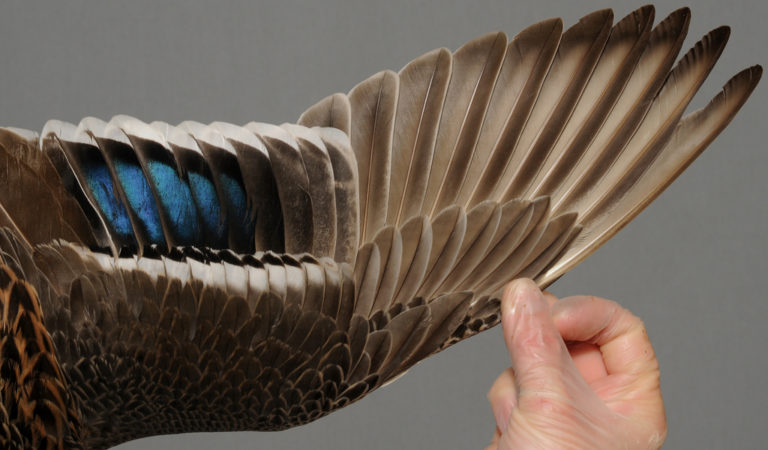
1cy female, October. A young bird with a greyish hand (compare 2cy+ 90A85547 right below) and quite rounded PC, but MC and LC give a generally brownish impression. The black GC band is weak and many GC have buffish-white tips, indicative of juvenile. The white GC band turns buffish on TC. TT are narrow, brown and worn, thus clearly juvenile. [90A88437]
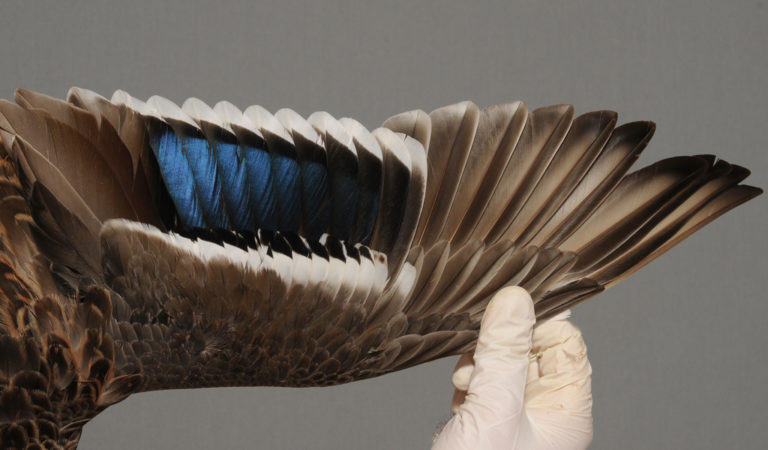
2cy+ female, September. The adult wing is colder greyish-brown and PP sometimes appear broader and less worn. PC are greyer, especially on the outer vane. The pure white GC band continues onto tertial-c and the black GC tips are generally larger. Note also the broad TT with a grey tone. [90A85506]
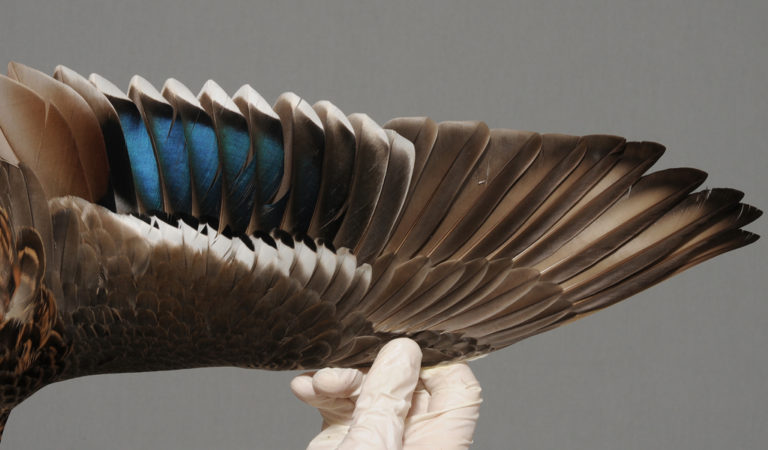
2cy+ female, September. This individual has a fairly dark hand (compare 1cy 90A88437 right above) and MC to LC, but the silvery-grey (male-like) TT easily give it away as an adult. GC show untypically narrow and uneven black terminal band, but are broad and blunt and do show a distinct border between grey and white, which is indicative of adult. TC are broad and have pure white tips (although slightly covered by long MC). [90A85547]
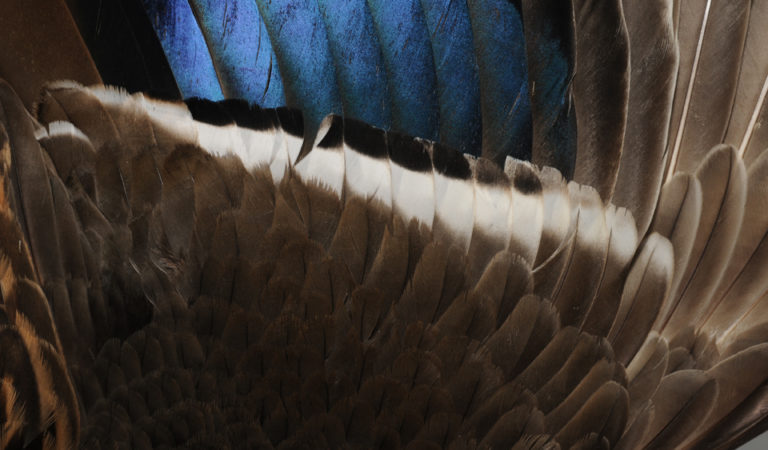
1cy female, October. Juvenile LC and MC are generally greyish-brown. The narrower and slightly more pointed shape of juvenile coverts may be present in all coverts shown here, but is usually more obvious in GC. The black tips usually form a rather uneven band that is much reduced in the outer part of the arm, in this case no black in GC1-4 and diffuse black in GC5-6. Note growing inner TC with pure white tip. [90A88487]

2cy+ female, October. Adult MC and LC are generally more greyish compared to juveniles. LC, MC and GC are slightly broader with a somewhat blunter tip. The black tips are usually reduced on the outer GC, but are generally present on both vanes to GC3 (GC2 in this individual). There is usually a sharper contrast between the black and white of each GC. Note also the broad and fresh TC with pure white tips. [90A87739]
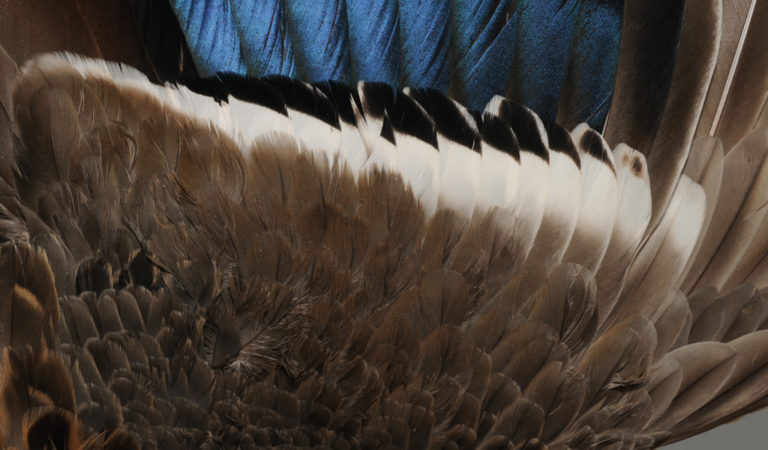
2cy+ female, September. MC and LC may sometimes be quite worn and show buffish edging, but still generally have a colder greyish-brown colour compared to young birds. The obvious chestnut hue, as in this individual, is likely more common in adult females. An “untidy” black GC band and diffuse grey border may more often be seen in juveniles. [90A85506]
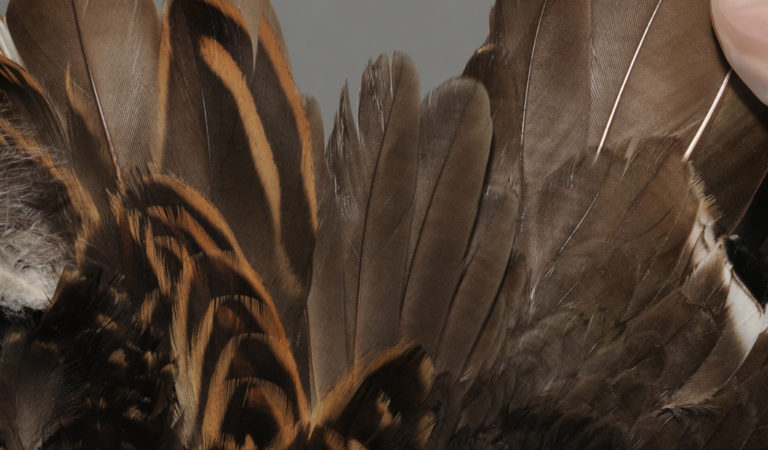
1cy female, November. Juvenile PH are rather narrow and brownish and obviously worn. The two longest scapulars (partly hidden by the third longest scapular showing adult-type internal pattern) are quite similar, although the shape of these are more pointed. The rest of the scapular area has been moulted, being fresh and broadly edged warm buff. [90A88718]
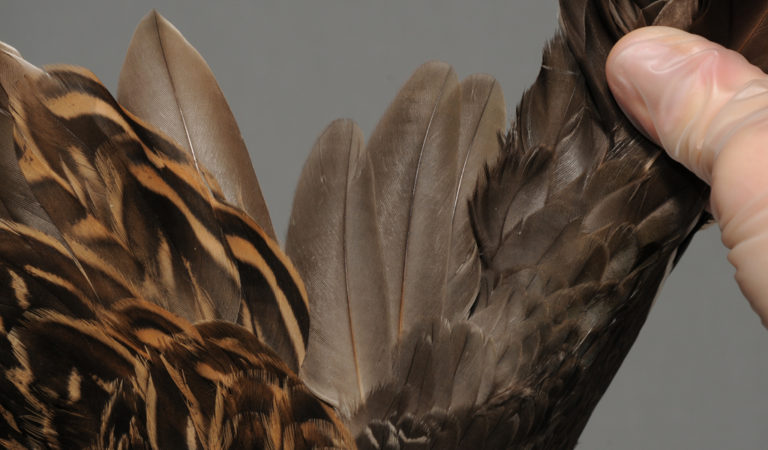
1cy female, October. This young female has rather broad and round juvenile PH. However, the age is revealed by their wear and brownish colouration, and the two longest scapulars are narrow and worn (compare adult 90A87958 right below). Rest of the scapular area is freshly moulted, showing nice blackish and warm buff colours and extensive internal patterns. [90A88640]
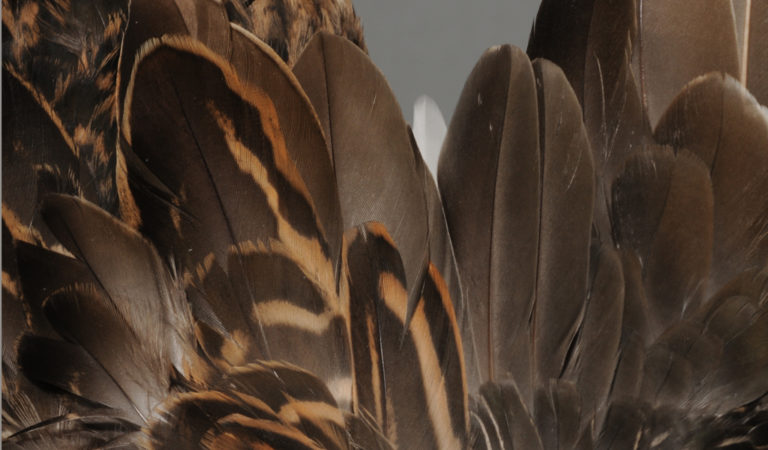
2cy+ female, October. This adult female has quite narrow and juvenile-shaped PH, but note that they are less brown and of better quality compared to 1cy 90A88718 right above. The two longest scapulars are broader and less worn too. Rest of the scapulars are similar (being adult in both), although with slightly more internal patterns in the 2cy+ individual. [90A81780]

2cy+ female, October. Adult females often show distinct blackish spots and a bright yellow-orange colour of the bill. [90A86379]
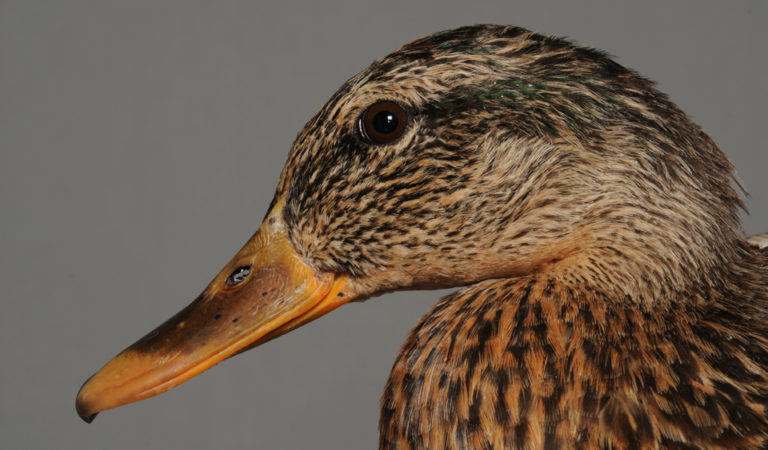
2cy+ female, September. Some adult females lack the distinct blackish spotting and have a fairly dull ground colour. Usually, there are still weak traces of spots around the nostrils and at the base of the bill. Note the slightly paler brown iris in this individual compared to some juveniles. [90A87345]
More Anas platyrhynchos:
Ringers’ DigiGuide is sponsored by: